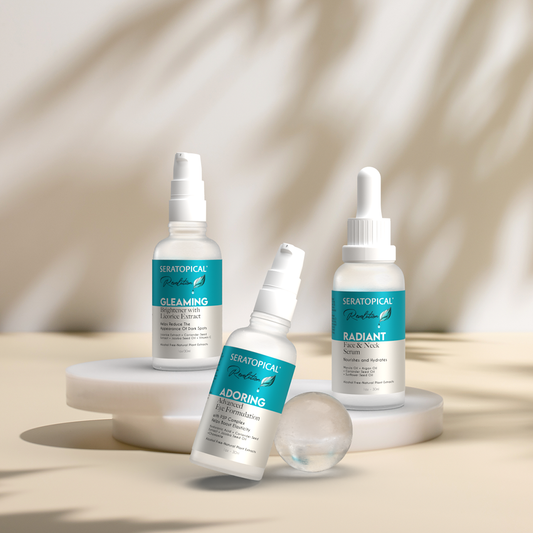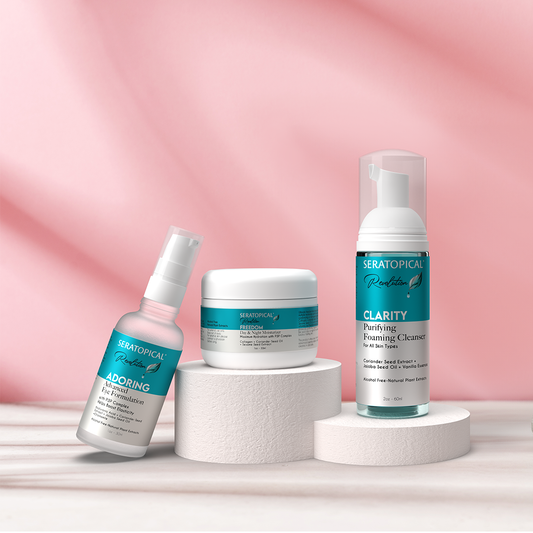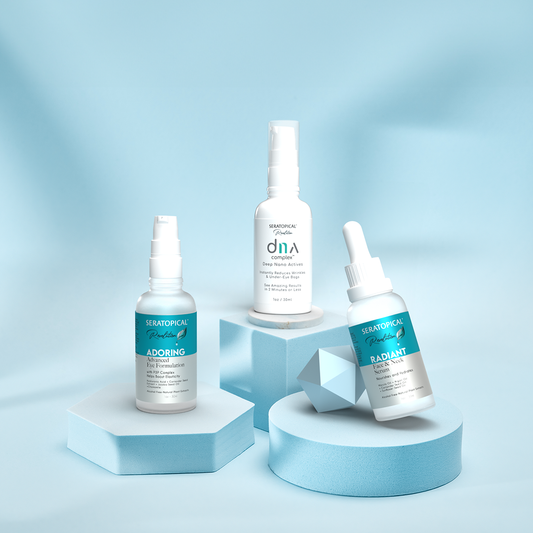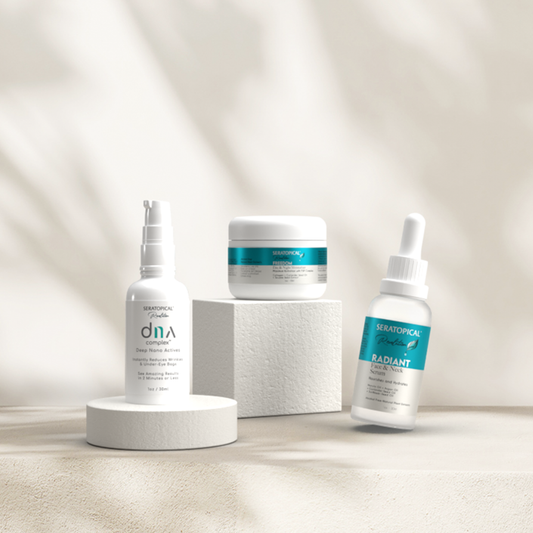Staying youthful is hard work. You do your best to keep grey hairs covered and shield your face with SPF. Chances are you’ve even amassed a collection of wide-brimmed hats. But if you forget about your hands, they might start to reveal your actual age or can even add years to your appearance. Your hands need the same care and attention as your face when it comes to an anti-aging skincare routine. It’s never too late to start caring for the skin on your hands. There are plenty of regimens out there to give your hands the help they need.
The Aging Process and Hands
The aging process is a natural and inevitable part of life, characterized by a gradual decline in the body's functions and an increased susceptibility to various health conditions. This process affects various parts of the body, including the hands. As individuals age, their skin becomes thinner and less elastic, leading to wrinkles, age spots, and a loss of youthful texture in the hands. Additionally, decreased collagen production can result in decreased skin firmness and flexibility.
Beyond cosmetic changes, the aging process can impact the functionality of the hands. Joints may experience wear and tear, leading to conditions like osteoarthritis, which can cause pain, stiffness, and reduced dexterity. Muscle mass and strength may also decline, affecting grip strength and fine motor skills. Furthermore, age-related conditions such as osteoporosis can increase the risk of fractures, particularly in the fragile bones of the hands.
Overall, the aging process manifests differently in each individual, but it invariably brings changes to the hands and various other parts of the body, highlighting the importance of maintaining good overall health and engaging in regular physical activity to mitigate some of these effects.
Key Factors Contributing to Aging Hands
The aging of hands is influenced by several key factors, each contributing to the visible and functional changes that occur over time. Genetics plays a significant role, as an individual's genetic makeup can determine their skin type, which in turn affects how prone they are to wrinkles, thinning, and other age-related issues. Collagen loss is another critical factor; collagen, a protein that provides structural support to the skin, naturally decreases with age, leading to decreased skin elasticity and firmness in the hands.
Sun exposure is perhaps one of the most influential factors in premature aging of the hands. Prolonged exposure to UV rays can lead to the formation of age spots, freckles, and wrinkles, and it accelerates the breakdown of collagen and elastin fibers in the skin. Additionally, the hands are often exposed to the sun without proper protection, making them susceptible to sun damage.
Other contributing factors to hand aging include smoking, which can decrease blood flow to the skin and cause premature wrinkling, as well as poor hand care practices, such as neglecting moisturization and not wearing gloves during harsh weather conditions. To maintain youthful-looking hands, it's crucial to protect them from sun damage, adopt a skincare routine that includes moisturizing and applying sunscreen, and consider genetic predispositions when addressing age-related concerns.
Aging Hands FAQ’s
1. What causes our hands to show signs of aging?
Our hands show signs of aging due to a combination of natural biological processes and external factors. One of the primary causes is the natural aging process, which leads to a gradual decrease in the production of collagen and elastin, proteins that provide skin with elasticity and firmness. This results in thinner, less resilient skin on the hands, making wrinkles and fine lines more apparent.
External factors also play a significant role. Sun exposure is a major contributor to premature aging of the hands. UV rays from the sun can damage the skin's DNA, lead to the formation of age spots, and accelerate collagen breakdown. Additionally, repeated exposure to environmental elements, harsh weather, and chemicals can contribute to skin dryness and damage.
Lifestyle choices such as smoking and poor hand care practices can further exacerbate the aging process. Smoking reduces blood flow to the skin, causing premature wrinkles, while neglecting proper moisturization and protection can leave the hands vulnerable to environmental stressors.
In summary, signs of aging in the hands are primarily caused by a combination of intrinsic factors related to aging and extrinsic factors like sun exposure and lifestyle choices. Taking preventive measures such as sun protection, moisturization, and avoiding harmful habits can help mitigate these effects and maintain youthful-looking hands.
2. What are the common signs of aging hands?
Common signs of aging hands include:
Wrinkles and Fine Lines: The skin on the hands becomes thinner and loses its elasticity over time, leading to the development of wrinkles and fine lines, particularly on the knuckles and the back of the hand.
Age Spots: Also known as liver spots or sunspots, these flat, brownish patches often appear on the hands due to prolonged sun exposure and an accumulation of melanin.
Thinning Skin: Aging causes a reduction in collagen and elastin production, resulting in thinner, more fragile skin that is prone to bruising and tearing.
Vein Visibility: As the skin thins and loses elasticity, veins and tendons become more visible, giving the hands a more skeletal or bony appearance.
Loss of Volume: A decrease in subcutaneous fat can lead to a loss of volume and fullness in the hands, making them appear hollow or gaunt.
Decreased Dexterity: Reduced joint flexibility and muscle strength can lead to decreased hand dexterity and grip strength, making tasks like opening jars or buttons more challenging.
Brittle Nails: Aging can also affect the nails, causing them to become brittle, thin, and more prone to breakage.
These signs of aging in the hands are common and can be addressed with proper skincare, protection from sun damage, and sometimes cosmetic procedures if desired.
3. Can I prevent or slow down the aging process of my hands?
Yes, you can take several measures to prevent or slow down the aging process of your hands and maintain their youthful appearance and functionality. Here are some tips to help you achieve this:
Sun Protection: One of the most effective ways to prevent premature aging of the hands is to protect them from harmful UV rays. Always apply sunscreen with a broad-spectrum SPF of at least 30 to your hands, even on cloudy days. Consider wearing gloves and long sleeves when spending extended periods in the sun.
Moisturization: Regularly moisturize your hands to keep the skin hydrated. Choose a quality hand cream or lotion containing ingredients like hyaluronic acid, glycerin, or ceramides, which help retain moisture and improve skin texture.
Anti-Aging Creams: Look for hand creams or serums formulated with ingredients like retinol, antioxidants (vitamin C and E), and peptides. These can stimulate collagen production and reduce the appearance of wrinkles and age spots.
Exfoliation: Exfoliate your hands occasionally to remove dead skin cells and promote cell turnover. Gentle exfoliating scrubs or chemical exfoliants like alpha hydroxy acids (AHAs) can help improve the texture of your skin.
Healthy Lifestyle: Avoid smoking, as it can accelerate skin aging and reduce blood flow to the hands. Maintain a balanced diet rich in antioxidants, vitamins, and minerals to support overall skin health. Staying hydrated is also essential for skin elasticity.
Hydrate from Within: Drink plenty of water to keep your skin hydrated from the inside out. Proper hydration helps maintain skin elasticity and suppleness.
Hand Care: Be gentle with your hands. Use mild soaps and avoid hot water, which can strip the skin of its natural oils. Pat your hands dry instead of rubbing them vigorously. Wear gloves when performing household chores, gardening, or during cold weather to protect your hands.
Regular Exercise: Engage in regular hand and finger exercises to maintain joint flexibility and muscle strength. This can help preserve hand dexterity and reduce the risk of stiffness.
Cosmetic Procedures: If you're concerned about advanced signs of aging on your hands, consult a dermatologist or plastic surgeon. They can recommend procedures like laser therapy, dermal fillers, or chemical peels to address specific issues and rejuvenate the appearance of your hands.
Remember that consistency is key when it comes to preventing or slowing down the aging process of your hands. By adopting a comprehensive hand care routine and making healthy lifestyle choices, you can keep your hands looking and feeling youthful for years to come.
4. What role does sun exposure play in aging hands, and how can I protect them from UV damage?
Sun exposure plays a significant role in aging hands as it can lead to premature aging and various skin issues. UV rays from the sun can cause the breakdown of collagen and elastin fibers in the skin, resulting in decreased elasticity and the development of wrinkles. Additionally, sun exposure can trigger the formation of age spots or sunspots, which are dark, flat patches on the skin.
To protect your hands from UV damage:
Apply Sunscreen: Use a broad-spectrum sunscreen with SPF 30 or higher on your hands every day, even during overcast or winter days. Reapply if you're outdoors for an extended period or after washing your hands.
Wear Gloves: When possible, wear gloves that provide UV protection, especially when gardening or spending extended periods in the sun. There are specialized sun-protective gloves designed for this purpose.
Seek Shade: Stay in the shade, especially during peak sunlight hours between 10 a.m. and 4 p.m. This reduces direct exposure to UV rays.
Cover Up: Wear long-sleeved shirts and wide-brimmed hats to protect your hands and other exposed skin from the sun.
UV-Protective Clothing: Consider clothing with UPF (Ultraviolet Protection Factor) for added protection. Some fabrics are designed to block harmful UV rays.
Avoid Tanning Beds: Tanning beds emit UV radiation that can be even more damaging than natural sunlight. Avoid using them to protect your skin.
By taking these precautions, you can significantly reduce the risk of UV damage to your hands and help maintain their youthful appearance while minimizing the risk of skin issues associated with sun exposure.
5. Are there any effective skincare products or treatments for aging hands?
Yes, there are several effective skincare products and treatments available for aging hands to help improve their appearance and combat common signs of aging:
Hand Creams: Look for hand creams that contain ingredients like retinol, hyaluronic acid, antioxidants (such as vitamin C and E), and peptides. These ingredients can help stimulate collagen production, reduce the appearance of wrinkles, and hydrate the skin.
Sunscreen: Regularly applying a broad-spectrum sunscreen with SPF 30 or higher to your hands can prevent further sun damage and protect your skin from harmful UV rays.
Exfoliants: Gentle exfoliation with products containing alpha hydroxy acids (AHAs) or beta hydroxy acids (BHAs) can help remove dead skin cells and improve the overall texture of your hands.
Serums: Anti-aging serums designed for the hands can be effective. They often contain a concentrated blend of ingredients to target specific concerns like age spots and uneven skin tone.
Chemical Peels: Dermatologists can perform chemical peels on the hands to improve skin texture, reduce the appearance of age spots, and stimulate collagen production. This is a more advanced treatment option.
Dermal Fillers: Injectable dermal fillers like hyaluronic acid can add volume to the hands, reducing the appearance of hollow areas and giving a more youthful appearance.
Laser Therapy: Laser treatments can address various hand aging concerns, including age spots, wrinkles, and skin tightening. Fractional laser therapy is commonly used for this purpose.
Microdermabrasion: This procedure involves the removal of the top layer of skin, helping to improve the appearance of fine lines, age spots, and overall skin texture.
Homecare Devices: Some homecare devices, such as light therapy or microcurrent devices, may offer mild improvement in hand appearance when used consistently over time.
It's essential to consult with a dermatologist or skincare professional to determine the best approach for your specific concerns and skin type. A customized skincare routine that includes a combination of products and treatments can help you achieve more youthful-looking hands. Additionally, maintaining good hand care practices, such as moisturizing and sun protection, should be an integral part of your anti-aging strategy.
How To Make Your Hands Look Younger
Curious what causes “grandma hands?” You’ll find the answer in how your entire body evolves over the course of time. But, according to dermatologist Amy Kassouf, MD, everyone has the power to intervene in the way this happens. Kassouf told Cleveland Clinic: “Dry, scaly skin, brittle nails, and dark age spots can become problems as people get older.” During the aging process, your hands lose fat and elasticity, and your skin loses volume. Wrinkles and age spots develop from the reduced volume and decreased elasticity that creates translucent skin. “Your hands can also develop a skeletal appearance because you lose fat in some places as you age,” Dr. Kassouf added.
Ways to Help Hands Not To Wrinkle
Fortunately, there are several ways to halt signs of aging on the hands. When speaking with Cleveland Clinic, Dr. Kassouf also recommended the following:
- Moisturize: Never allow your hands to dry out. Keep lotion in your purse and apply it regularly during the day. Always keep a bottle of moisturizer handy on the sink so you won’t forget to engage in this critical anti-aging ritual.
- Care: Put on cotton-lined gloves if you’re gardening or using harsh soap or chemicals to clean. Wash your hands with mild pH soaps only. Shop for mild or ultra-mild versions. Ask your doctor for more recommendations if you’re unsure which soap to choose.
- Exfoliate: You already exfoliate your body and face—so don’t skip your hands. Grab a gentle loofah or a combo of sugar, lemon, and natural oil to take off the dead skin and skin cells from the surface of your palms and on the fingers and knuckles. Cap off the routine with some moisturizer right afterward.
- Eat Healthy: A skin-friendly diet is a balanced one featuring plenty of vitamins, antioxidants, and omega-3 fatty acids that nourish your skin and help you grow healthy nails. When your diet lacks specific proteins, vitamin C, or vitamin B complex or if your absorption is sub-par, your nails can turn brittle or peel and flake easily. “Make sure to eat a balanced diet full of foods that are good for your skin which contain vitamins to nourish your hands from the inside out. You can also get yourself a good multivitamin,” Dr. Kassouf says.
The Solution: Why You Should Use Specialized Hand Products
So, you're probably convinced by now that your hands deserve some added TLC. But here’s a question: why are specialized hand products the best ways to deliver that TLC? To start, specialized hand products are highly effective at delivering the moisture your hands need. You already know that your skin requires moisture to keep its elasticity and remain soft, supple, and beautiful. Next, they’re simple to use. Before you tuck into bed, apply an essential oil to your palms. You’ll sleep soundly knowing you’ll have softer, more hydrated hands to wake up to the next day. Third, they’re a self-care treat. Well, at least this one is. Fans love Seratopical’s Overnight Hand Therapy with essential oils for the warming sensation of hemp and calming aroma of lavender oil. Try it here.
Source: https://health.clevelandclinic.org/are-your-hands-aging-you/








